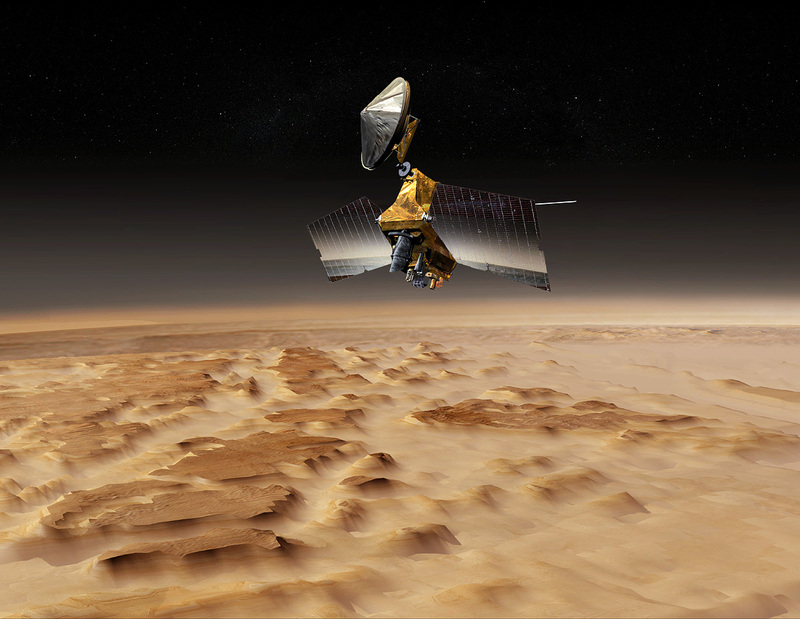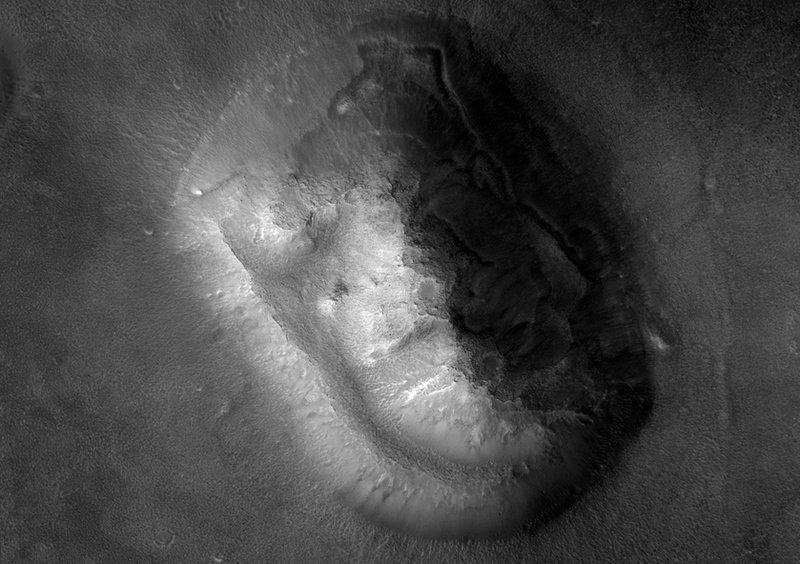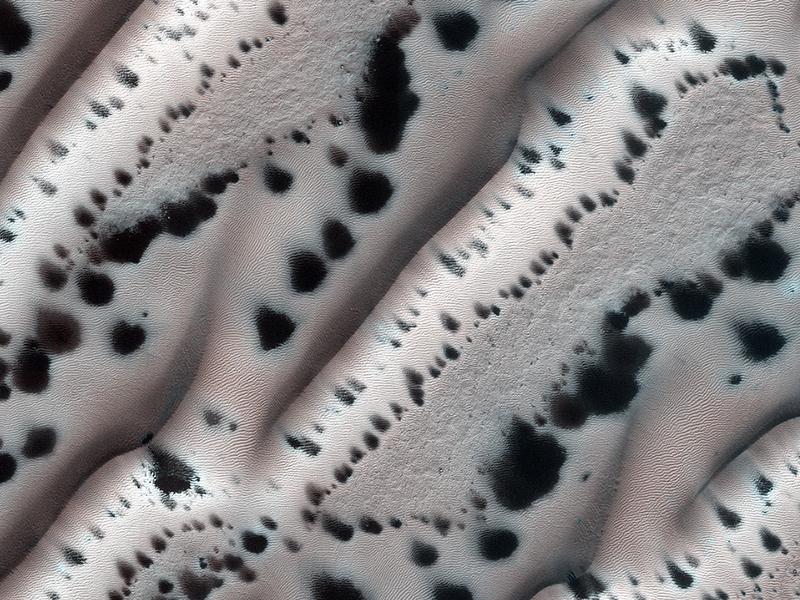NASA moves Mars to Russia
NASA is making significant efforts to promote astronautics and its research activities. This is usually explained by the fact that the state agency is interested in showing its success to the public, that is, to American taxpayers. Probably, to a large extent, it is, but today's news is knocked out of this scheme.
Yesterday it became known that NASA launches two new directions on the Internet, which will be conducted in Russian.
This is a Twitter channel: HiRISERussian
And the photo album Thumbr: beautifulmars-russian.tumblr.com

In this case, we are talking about Mars explorations using the Mars Reconnaissance Orbiter spacecraft and its HiRise high resolution camera (High Resolution Imaging Science Experiment).

The satellite flies over Mars at an altitude of 280-300 km and removes the surface with details up to 25 cm per pixel. In fact, this resolution is higher than the vast majority of satellites in Earth orbit. Today, more than twenty-five thousand pictures of Mars have been made and published ( carefully, you can stick on the site for a long time ). Despite this amount, the coverage of images is only a few percent of the surface of the Red Planet, but now they are the richest material for exploring the planet and just aesthetic enjoyment of unearthly paintings.
')
Despite the abundance of information, this site is not popular with fans of Martian sphinxes, pyramids and other glass tunnels. The highest detail of the images leaves no hope for the discovery of any civilization like a human one. Channels, roads, walls, foundations, i.e. all that is determined by aerial photography and satellite imagery on Earth is completely absent on Mars. And what seemed so in the photographs of previous devices, shows only the richness of the imagination of the "pioneers". Dinosaur skeletons could also be found there, but wild fauna did not leave any traces.

Archaeologists and paleontologists on Mars have nothing to do, but a vast field of activity remains to geologists, planetologists and climatologists.

According to the results of research, scientists compile descriptions of satellite images so that everyone can understand exactly what he sees in the picture.
The HiRise project is managed by the University of Arizona.
The HiTise site has been operating for several years with the HiTranslate project, which is collaborating with volunteers from different parts of the world and translating popular science commentaries to satellite imagery in various languages of the world. Now the site has already French, German, Spanish, Portuguese, Italian, Dutch, Icelandic, Greek and Arabic subsections. Russian is preparing, and will be released as enough materials accumulate.

During the search for Mars-3, I spoke with the scientific experts of the HiRise project. They asked if I could not find translators who would like to help in the implementation of the HiTranslate project in Russian. I threw the cry Vkontakte. Several people responded, and now, two months later, NASA is beginning to publish the results of their activities. I thought about asking for help on Habr, but, knowing how many English-speaking enthusiasts of Mars are here, honestly, I was afraid that the HiTranslate department would be paralyzed with habra effect. However, if the desire and willingness appear, write to them at the address indicated on the site or through me - in a personal here or VK.
Yesterday it became known that NASA launches two new directions on the Internet, which will be conducted in Russian.
This is a Twitter channel: HiRISERussian
And the photo album Thumbr: beautifulmars-russian.tumblr.com

In this case, we are talking about Mars explorations using the Mars Reconnaissance Orbiter spacecraft and its HiRise high resolution camera (High Resolution Imaging Science Experiment).

The satellite flies over Mars at an altitude of 280-300 km and removes the surface with details up to 25 cm per pixel. In fact, this resolution is higher than the vast majority of satellites in Earth orbit. Today, more than twenty-five thousand pictures of Mars have been made and published ( carefully, you can stick on the site for a long time ). Despite this amount, the coverage of images is only a few percent of the surface of the Red Planet, but now they are the richest material for exploring the planet and just aesthetic enjoyment of unearthly paintings.
')
Despite the abundance of information, this site is not popular with fans of Martian sphinxes, pyramids and other glass tunnels. The highest detail of the images leaves no hope for the discovery of any civilization like a human one. Channels, roads, walls, foundations, i.e. all that is determined by aerial photography and satellite imagery on Earth is completely absent on Mars. And what seemed so in the photographs of previous devices, shows only the richness of the imagination of the "pioneers". Dinosaur skeletons could also be found there, but wild fauna did not leave any traces.

Archaeologists and paleontologists on Mars have nothing to do, but a vast field of activity remains to geologists, planetologists and climatologists.

According to the results of research, scientists compile descriptions of satellite images so that everyone can understand exactly what he sees in the picture.
The HiRise project is managed by the University of Arizona.
The HiTise site has been operating for several years with the HiTranslate project, which is collaborating with volunteers from different parts of the world and translating popular science commentaries to satellite imagery in various languages of the world. Now the site has already French, German, Spanish, Portuguese, Italian, Dutch, Icelandic, Greek and Arabic subsections. Russian is preparing, and will be released as enough materials accumulate.

During the search for Mars-3, I spoke with the scientific experts of the HiRise project. They asked if I could not find translators who would like to help in the implementation of the HiTranslate project in Russian. I threw the cry Vkontakte. Several people responded, and now, two months later, NASA is beginning to publish the results of their activities. I thought about asking for help on Habr, but, knowing how many English-speaking enthusiasts of Mars are here, honestly, I was afraid that the HiTranslate department would be paralyzed with habra effect. However, if the desire and willingness appear, write to them at the address indicated on the site or through me - in a personal here or VK.
Source: https://habr.com/ru/post/182412/
All Articles